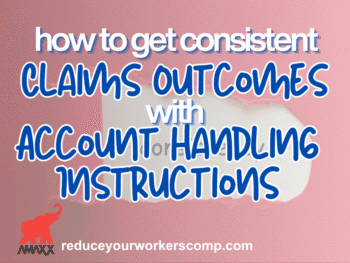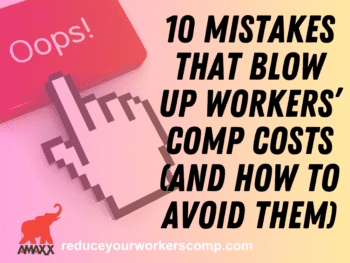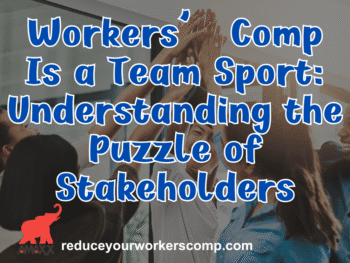
Purpose of Training
Training is the cornerstone of formal employee communication. It serves two purposes:
- To ensure consistent knowledge of supervisors and other front-line personnel to perform post-injury response and return-to-work functions uniformly throughout the organization
- To bring senior management on board
This post is one in a 3-part series:
Key Training Activities
Some key training activities include:
- Informing supervisors of day-to-day responsibilities
- Informing all employees of new processes
- Emphasize benefits and encourage participation
- Distributing new policies and procedures
- Promoting the program via memos, brochures, posters, newsletters, etc.
- Reinforcing management commitment via newsletters/key inquiries by top managers
- Identifying and documenting transitional duty tasks
- Incorporating new policies/procedures into human resource packets for current employees and new hires
Click Link to Access Free PDF Download
Your Company Message
The main message you want to convey is: “Our employees are our greatest asset, we are sorry one of our employees was injured, and we need your help getting them back to work.”
Supervisors and employees should know the benefits your company wishes to provide:
- Immediate medical attention
- Minimizing the chance of further injury or medical complications
- Continued employment
- Maintaining morale and eliminating problems for the employee while injured
- Eliminating future accidents by properly investigating the cause of an injury
- Keeping the company financially viable helps everyone
Identify Learner Objectives
Too often companies call wanting “a training program” and don’t care if it was developed for a different company in a different industry — “just send me a training program,” they say!
When designing training programs for workers’ comp (or anything else) you need to identify what you want the participants to “do differently” after the training. Ask yourself these questions:
- What do you want the training to accomplish?
- Do you want the participants to be able to pay a workers’ comp claim or recognize when there is a potentially fraudulent claim?
You’ll need to develop a list of “learner objectives” before you develop your training materials to address those objectives. So, first, determine your program gaps then design the material.
While workers comp training can be used by different industries, it can only be used when the company’s gaps are the same. When your divisions assess their best practices, each operating unit will receive separate recommendations. These are the core of your learning objectives. For example, in a company with five divisions, where all divisions failed Best Practices #85 and 86, those must be included in the training.
FREE DOWNLOAD: “Step-By-Step Process To Master Workers’ Comp In 90 Days”
The Gap Analysis
Companies with more than one operating unit have a bigger challenge than most to control their workers’ comp problems. Given the geographical disparity and the cost of travel, determining where gaps are challenges risk managers of decentralized companies. A Gap Analysis should use the best practices of the RIMS Benchmark Survey as a metric.
When each operating unit takes the best practice assessment, the results are compiled into a Gap Analysis. This provides a summarized list of many recommendations for improvement that need to be incorporated into your workers’ comp training programs.
The Gap Analysis is a corporate-wide needs assessment that is a roadmap for your training program. Whatever else you cover, you must cover these questions because there may be an opportunity for improvement in these areas. Do the assessment, AND THEN design the training program.

Contact: RShafer@ReduceYourWorkersComp.com.
Workers’ Comp Roundup Blog: https://blog.reduceyourworkerscomp.com/
©2020 Amaxx LLC. All rights reserved under International Copyright Law.
Do not use this information without independent verification. All state laws vary. You should consult with your insurance broker, attorney, or qualified professional.
FREE DOWNLOAD: “Step-By-Step Process To Master Workers’ Comp In 90 Days”













